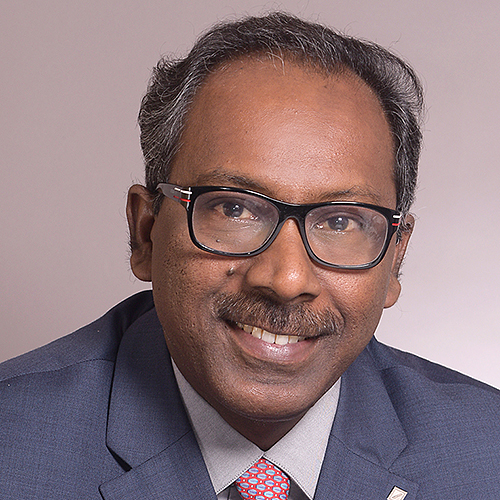Here is a tale of two countries. Small and developing Heliopolis and Urbana are in dire need of green infrastructure. Without it, both will miss the greenhouse gas emission targets they have committed to in various climate summits. Mindful of the low-income status of these nations, the international community announces it will give each US$1 billion a year for five years to make the needed investments possible.
Most of Heliopolis’ emissions come from the coal-fired plants that produce the country’s electricity. Luckily, Heliopolis is a sunny and pleasant land, and its mostly rural population is evenly distributed across the territory. The necessary power can be produced by roof-top solar panels and small-scale solar parks, with little transmission and distribution infrastructure needed. So, Heliopolis uses the US$1 billion to import solar panels (they are not produced domestically), swiftly closes the carbon-belching coal plants, and announces that by 2030 all of its electricity will be green.
Urbana, by contrast, is densely populated. Most of its carbon emissions come from the cars and buses perennially stuck in traffic in the capital city. Urbana needs to increase use of public transport, get traffic moving, cut travel times and reduce pollution.
But here is the catch: building bus lanes, tunnels, and bridges requires cement and engineers, and both are in fixed supply in Urbana. So, the US$1 billion bids up the profits of cement companies and the wages of engineers, but little or no new infrastructure gets built and toxic emissions remain unchanged. The main consequence of foreign aid is a worsening of income distribution, since cement tycoons and elite engineers were rich already, and they have become richer.
As the world gears to move “from billions to trillions” in capital to finance the green transition, few issues are more important than whether the developing world looks more like Heliopolis or more like Urbana.
A report by the London School of Economics and the Brookings Institution in Washington, DC, estimates that to limit warming to 1.5 degrees Celsius above pre-industrial levels, the world will need to invest an incremental US$1.3 trillion by 2025 and US$3.5 trillion by 2030. This amounts to an investment increase of at least 2% of GDP per year, and more in low-income countries where green infrastructure is deficient.
The first question is who will supply the financing. That is far from settled – in fact, the US$100 billion a year long ago promised by rich countries is yet to materialize – but progress is happening. The second question, which has received much less attention, is how to ensure the money will have the desired effects.
At stake is the “transfer problem” that economists John Maynard Keynes and Bertil Ohlin clashed over in the debate about German reparations after World War I. Keynes worried that the larger the payment Germany tried to make, the more its terms of trade (the price of German exports relative to the price of goods exported by the Allied countries) would deteriorate, so the effort to extract reparations would be self-defeating.
Urbana’s troubles are a kind of “transfer problem” upside down. Urbana receives a payment from abroad but the price of cement and engineering services at home rise so much that it cannot build any additional tunnels or bus lanes. The foreign aid becomes self-defeating.
This “transfer problem” occurs when the money is used to buy so-called non-traded goods. Cement is so heavy it cannot be profitably traded internationally, and legislation often prevents foreign engineers from building local infrastructure. That explains why, in the example, Urbana is in trouble while Heliopolis, which uses the transfer to purchase solar panels from abroad, is not.
The difficulties for Urbana are, in fact, even worse than they seem at first. Some of those local engineers whose wages have been bid up were likely employed by export firms. Now that exporters cannot afford to hire as many engineers, Urbana’s exports could fall and other jobs (for unskilled laborers, for instance) in the export sector could vanish. Business school gurus would then conclude that Urbana was becoming “less competitive” and “losing its edge”.
In Urbana, the transfer from abroad causes the economic disease known as “real exchange rate appreciation”. Could the appreciation resulting from climate finance be large enough to do real damage? As the examples suggest, the correct answer is “it depends.” The devil is in the local details. But if, say, each percentage point of GDP in foreign transfers implies a 5% appreciation of the real exchange rate, and in low- and middle-income countries the required capital transfers from abroad amount to 3% or 4% of GDP per year, we are looking at appreciations of 20% or so.
Not the end of the world for local exporters. But the expectation of that moderate appreciation could trigger additional capital flows, of the speculative variety, and the competitiveness problem would then become much larger. Disgruntled exporters would be tempted to march downtown in protest, throw rotting produce at ministers, and perhaps smash a few shop windows along the way.
Notice: even in Heliopolis foreign capital flows are likely to cause some real appreciation. The solar panels on their roofs are unlikely to provide all the electricity people need. Green power still requires the kinds of steel-and-mortar, large-scale investments (think pylons and electricity distribution centres) that can appreciate the real exchange rate and erode competitiveness.
There are plenty of policies that Urbana could undertake to make itself more like Heliopolis. For starters, building more bus lanes is not the only way to reduce carbon emissions; Urbana can also buy better buses – electric vehicles, or at least hybrids that burn gasoline instead of diesel. Because the buses are likely to be imported, purchasing them exerts no pressure on the real exchange rate. And if engineers and electricians are in short supply, Urbana can also offer work permits for professionals from abroad, with similar effects.
The green transition is correctly being billed as a growth and jobs story. But if it entails a massive real appreciation, it can also destroy jobs. And if governments take measures – like bringing equipment and professionals from abroad – to limit real exchange rate swings, then the political appeal of greenery begins to diminish. Imagine the campaign slogan: Support the Green Transition – A Unique Opportunity for Firms and Workers Not from Your Country!
Green infrastructure is indispensable. And the case for rich nations to help pay for the investment required by poor countries is watertight – economically and morally. But just as the best medicine can have unwanted side-effects, even the best green investment plan can have undesirable by-products. Unless we first acknowledge them and then address them, the world will not get the cut in emissions it so desperately needs.
Andrés Velasco is a dean of the School of Public Policy at the London School of Economics and Political Science and a former finance minister of Chile.
Copyright: Project Syndicate









